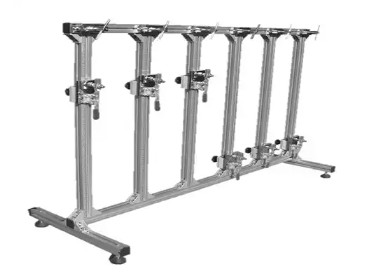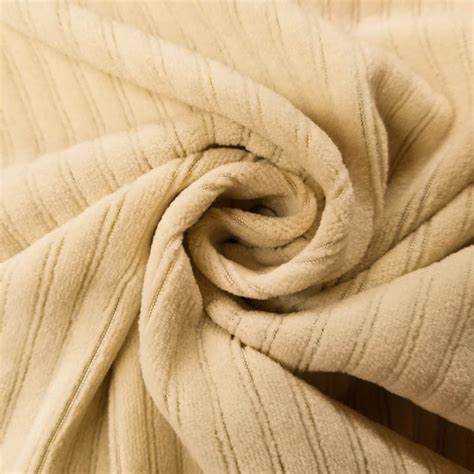- Qinsun Instruments Co., Ltd.
- Tell:+86-21-6780 0179
- Phone:+86-17740808215
- Address:No. 2578 Minhang District Gu Dai Road, Shanghai
- Contact:Mr. Li
- QQ:846490659
What is the breaking strength of fiber?

The breaking strength of a fiber refers to the maximum amount of tensile force or stress that a fiber can withstand before it breaks or fractures. It is a crucial mechanical property that indicates the fiber's strength and durability. The breaking strength of fibers can vary significantly based on factors such as fiber type, manufacturing processes, and environmental conditions. In this response, I will provide a detailed explanation of the breaking strength of fibers, including its importance, measurement techniques, and factors affecting it.
Importance of Breaking Strength:
The breaking strength of fibers is essential in assessing their suitability for various applications. Fibers with higher breaking strength are generally preferred in situations where they need to withstand high stress or load. For instance, in industries like textiles, aerospace, automotive, and construction, fibers with high breaking strength are desired to ensure structural integrity and longevity. The breaking strength also influences other fiber properties, including flexibility, elongation, and resistance to wear.

Measurement Techniques:
Several methods are commonly employed to measure the breaking strength of fibers:
1. Single Fiber Tensile Test: This method involves clamping a single fiber between two grips and applying a gradually increasing tensile force until the fiber breaks. The force applied, elongation, and strain are measured throughout the test to determine the breaking strength. Single fiber tensile testers are widely used in research and quality control to obtain accurate measurements.
2. Bundle Fiber Tensile Test: In this method, a bundle of fibers is gripped and subjected to an increasing applied force until the fibers break. The breaking force is measured, and the average breaking strength of the fibers in the bundle is determined.
3. Yarn or Filament Tensile Test: In this technique, a longer length of fiber bundles, known as yarn or filament, is tested. The yarn is clamped between the grips of a testing machine, and tensile force is gradually applied until the entire yarn or filament breaks. The breaking strength is measured along with other parameters such as elongation and modulus of elasticity.
Factors Affecting Breaking Strength:
Several factors influence the breaking strength of fibers:
1. Fiber Material: Different fiber materials, such as natural (e.g., cotton, silk) and synthetic (e.g., nylon, polyester), have varying breaking strengths. Synthetic fibers generally exhibit higher breaking strengths compared to natural fibers due to their manufacturing processes and molecular structures.
2. Fiber Diameter: Thinner fibers tend to have higher breaking strengths compared to thicker ones, assuming the same material. Decreasing the fiber diameter increases the fiber's surface-to-volume ratio, resulting in enhanced strength.
3. Fiber Orientation: The alignment of fibers in a composite material or textile structure significantly affects the overall breaking strength. Proper fiber alignment and distribution improve load-bearing capacity and strength.

4. Fiber Processing: Fiber processing techniques, such as spinning, drawing, and heat treatment, can alter the fiber's internal structure and molecular orientation, which impact the breaking strength.
5. Environmental Factors: Environmental conditions, including temperature, humidity, and exposure to chemicals or UV radiation, can affect the breaking strength of fibers. For example, prolonged exposure to UV radiation can degrade the fiber's strength over time.
6. Fiber Defects: Defects like knots, weak points, or impurities in the fiber can significantly reduce its breaking strength and mechanical properties.
Applications:
The breaking strength of fibers plays a critical role in various applications, including:
1. Textiles: Fibers with high breaking strength are vital for fabrics used in heavy-duty applications like industrial workwear, protective clothing, and upholstery.
2. Composites: Fibers are commonly embedded in matrices, such as polymers or metals, to form composite materials. The breaking strength of fibers influences the overall strength and mechanical properties of the composites.
3. Rope and Cordage: In industries like maritime, mountaineering, or construction, ropes and cordage require high breaking strength to withstand heavy loads and stresses.
4. Filtration: Fibers used in air and liquid filtration systems should possess sufficient breaking strength to avoid failure during use.
5. Reinforcements: Fibers serve as reinforcements in materials like concrete or asphalt, providing enhanced strength and durability.
In conclusion, the breaking strength of fibers is a fundamental property that reflects their resistance to stress and tensile forces. Accurate measurement of breaking strength helps determine their suitability for various applications. Multiple factors influence breaking strength, including fiber type, diameter, orientation, processing, and environmental conditions. Understanding these factors and conducting appropriate testing enables the selection of fibers with optimal strength and performance for desired applications.





